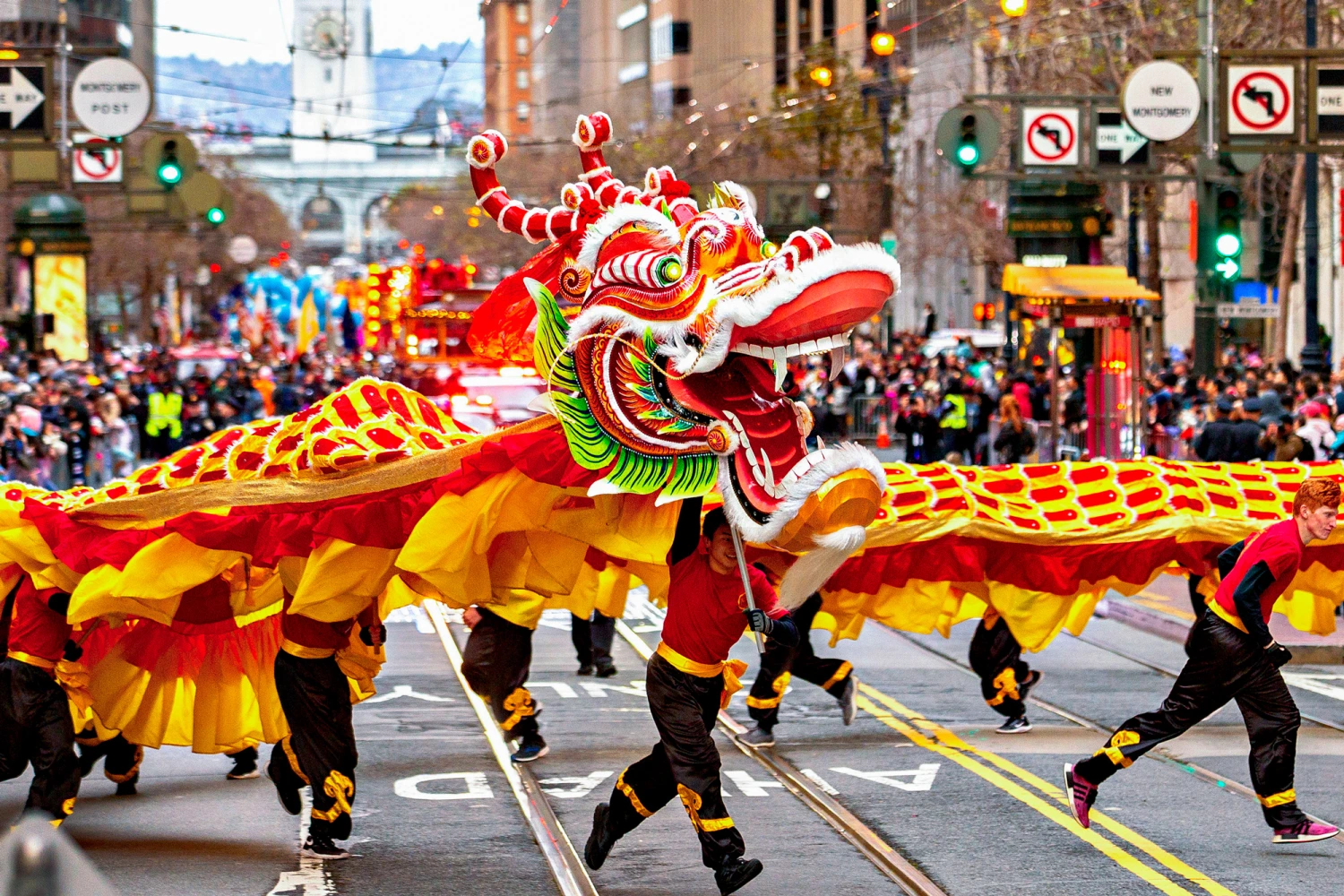Introduction: A Journey Home for the Year of the Dragon
Liu Mei had been working in New York City for the past five years, immersing herself in the hustle and bustle of Wall Street. Yet, as Chinese New Year approached, she felt an overwhelming pull to return to her roots. The festive spirit, the reunion with family, and the rich traditions beckoned her home to Beijing. In January 2024, Liu Mei joined millions of Chinese people in the world’s largest human migration, Chunyun, to celebrate the Year of the Dragon. This annual journey is more than just a homecoming; it’s a testament to the enduring significance of Chinese New Year, a festival that transcends borders and unites families across the globe.
The Significance of Chinese New Year
Chinese New Year, also known as the Spring Festival, is China’s most important traditional festival. It marks the end of winter and the beginning of spring. In 2024, Chinese New Year falls on Saturday, February 10, ushering in the Year of the Dragon, a symbol of power, strength, and good fortune.
The festival is celebrated with many customs and traditions, each with cultural significance. Every practice aims to ensure a prosperous and promising new year, from cleaning homes to sweeping away lousy luck to hanging red lanterns symbolizing prosperity.
The Largest Annual Human Migration
Chunyun, the massive migration that occurs during Chinese New Year, showcases this festival’s deep-rooted cultural importance. According to the Ministry of Transport of the People’s Republic of China, approximately 3 billion trips were made during the Chunyun period in 2019. Although the COVID-19 pandemic significantly reduced these numbers in recent years, the tradition remains strong, with millions travelling to be with their families.
With travel restrictions easing in 2024, over 2 billion trips are anticipated to be made during the 40-day travel season, highlighting the Chinese people’s enduring commitment to family reunions and cultural heritage.
Traditional Customs and Celebrations
Chinese New Year is prosperous, with customs passed down through generations. Here are some of the critical traditions:
- Red Envelopes (Hongbao)
Red envelopes filled with money are given to children and unmarried adults as a symbol of good luck and to ward off evil spirits. The money usually ends in an even number, which is considered lucky. In 2023, over 1 billion digital red envelopes were sent via WeChat, reflecting the blend of tradition and modern technology.
- Fireworks and Firecrackers
Setting off fireworks and firecrackers is believed to scare away evil spirits and bring good fortune. According to the China Fireworks and Firecrackers Association, over 700 million fireworks are set off during Chinese New Year celebrations each year despite increasing regulations to reduce air pollution.
- Reunion Dinner
The reunion dinner, held on New Year’s Eve, is the most important meal of the year for Chinese families. It features an abundance of dishes, symbolizing prosperity, and is an opportunity for families to strengthen their bonds. In 2023, the average cost of a reunion dinner in urban areas was around 2,000 RMB (approximately USD 310), according to the National Bureau of Statistics of China.
The Global Impact of Chinese New Year
Chinese New Year is celebrated in China and in Chinese communities worldwide. Cities like San Francisco, Sydney, and London host large-scale celebrations, attracting millions of participants.
In 2023, the Chinatown district of San Francisco welcomed over 1 million visitors during its Chinese New Year parade, one of the largest outside Asia. The economic impact of such celebrations is substantial, with local businesses experiencing a significant boost in sales.
Modern Trends and Innovations
As with many traditional festivals, Chinese New Year has evolved. The integration of technology has transformed how people celebrate:
- Digital Red Envelopes
Platforms like WeChat and Alipay have popularized digital red envelopes, making it easier for people to send good luck money to loved ones, regardless of geographical distance. In 2023, WeChat reported over 8 billion digital red envelopes sent during the Spring Festival.
- Virtual Celebrations
The COVID-19 pandemic accelerated the adoption of virtual celebrations. Many families now use video conferencing tools to connect with relatives who cannot travel. In 2023, over 300 million people participated in virtual family gatherings during Chinese New Year, according to a report by Tencent.
- Online Shopping and Gifts
E-commerce platforms see a surge in sales during Chinese New Year as people purchase gifts and decorations online. Alibaba reported a 45% increase in sales during the Spring Festival shopping season in 2023, reflecting the growing trend of online shopping.
Conclusion: Embracing Tradition and Modernity
As Liu Mei reunited with her family in Beijing, she reflected on the timeless traditions and modern innovations that shaped the Chinese New Year. The Year of the Dragon, with its promise of power and prosperity, symbolized a new beginning and a harmonious blend of old and new.
Chinese New Year 2024 will undoubtedly continue to honour the rich cultural heritage while embracing the conveniences of modern life. It’s a celebration that transcends borders, uniting millions in a shared experience of joy, renewal, and hope for the future.
